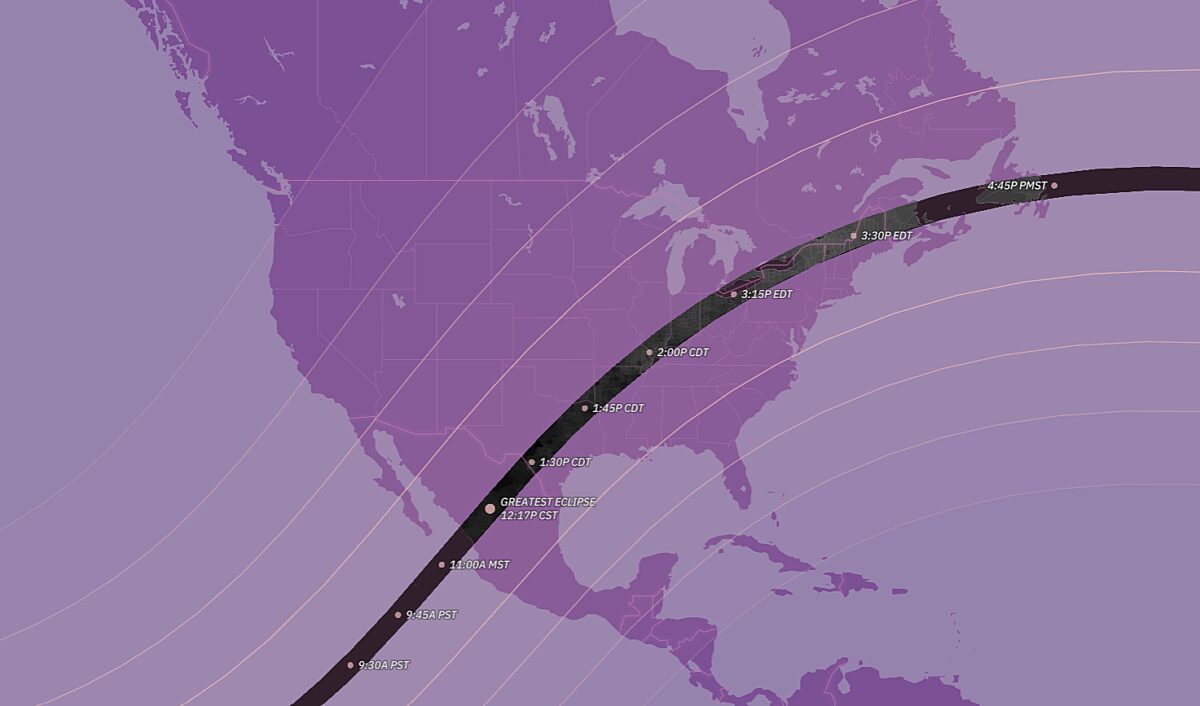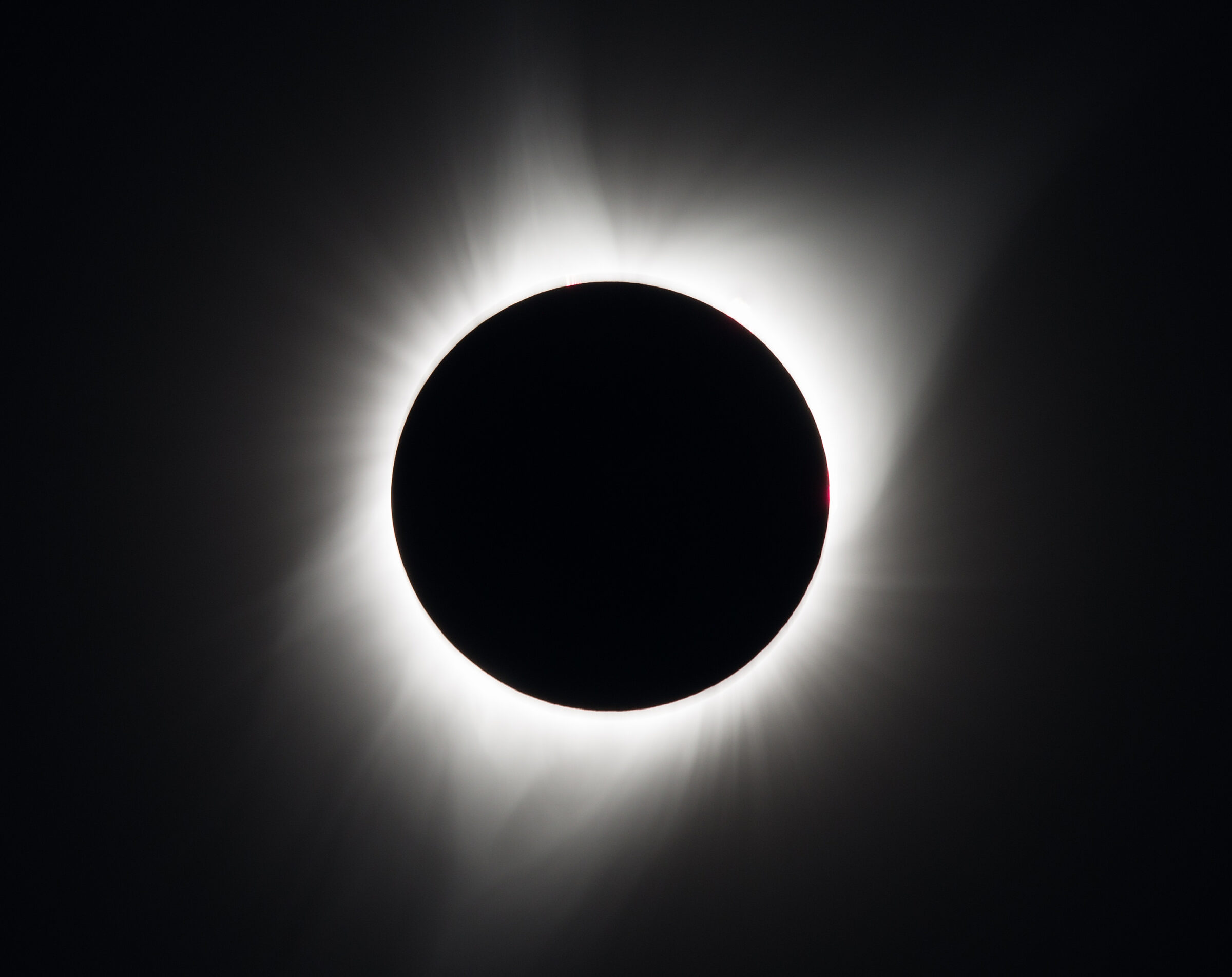Jason Davis • Sep 21, 2023
Want to experience the 2024 total solar eclipse? Here are some tips.
On April 8, 2024, a total solar eclipse will cross Mexico, the United States, and Canada. For those in the path of the Moon’s shadow — known as the path of totality — the sky will darken for a few minutes, revealing the Sun’s corona and creating a scene like nothing else in nature.
If you have the means to reach the path of totality on April 8, we highly recommend it. Locations even a smidge outside the path will only experience a partial solar eclipse and miss out on seeing a wide range of possible phenomena.
Making plans to see a total solar eclipse can feel like an overwhelming task, especially for first-timers. We spoke to two eclipse chasers, who have seen a combined 21 total solar eclipses, for some tips on how to make the most of your moment in the Moon’s shadow.

Picking a location
With a path of totality that stretches from Mexico to Canada, there are seemingly endless places where you can watch the eclipse. If you are fortunate enough to live in the path of totality, it may be best to stay right where you are, said Kate Russo, an author, psychologist, and eclipse chaser who helps communities plan for eclipses.
Any given location on Earth only experiences a total solar eclipse every 375 years. “So that's once every 375 years on average, in your special place,” she said. “Do you want to miss that?”
Everyone else will have to travel. The Eclipse Company has an interactive map that shows the duration of totality and the odds of cloudy skies for any location. The point of maximum eclipse falls near the city of Nazas, Mexico, which will enjoy 4 minutes and 28 seconds of totality with just a 41% chance of clouds.
But you don’t have to travel to Nazas for a good show. In the U.S., Texas has locations with just a few seconds less of totality, and fifty-fifty chances of a cloud-free sky.
Russo recommends looking at cities and towns along the path that have good road networks spidering out in multiple directions, in case you need to make a last-minute change of plans and want to decrease your odds of getting stuck in traffic.
“Always have a plan B,” she said.
David Baron, a journalist and the author of American Eclipse, advised that while clear skies and the length of totality are important factors, you also shouldn’t forget to enjoy yourself.
“You want this to be a fun experience,” he said. “If there's some place in the path of totality that has meaning to you, where you used to go when you were a kid, or where you've got friends, that's important. That's meaningful.”

Crowds versus solitude
With an estimated 43.8 million people living in the path of totality, and many more expected to travel there for the big day, a multitude of events and festivals are springing up to welcome the Moon’s shadow on April 8. Is it better to watch the solar eclipse in a crowd, or in relative solitude? Both Russo and Baron said there’s no right answer.
“It can be great fun to watch a total eclipse amidst thousands of people, and it can also be really meaningful to be alone or nearly alone and have it be a more private experience,” said Baron, who recalled a particularly memorable eclipse he saw in 1999 from a rooftop in Munich, Germany.
“I could see people gathered on rooftops all around me and in the streets below. And as the whole city fell into shadow, an enormous cheer came up from the streets,” he said.
If you’re looking for a group experience, one option is The Planetary Society’s Eclipse-O-Rama 2024 event in Fredericksburg, Texas, featuring live music, educational talks, and other activities.
All along the path of totality, lodging prices have skyrocketed. Many locations have minimum stay requirements, and it may take some extra research to find accommodations near your targeted location.
Contrary to what the term implies, eclipse chasers prefer to do very little chasing on the day of the eclipse itself.
“If at all possible, sleep the night before in the path of totality, so you don't have to go anywhere,” Baron said. “You don't want to spend the whole morning stuck in traffic, worried you're not going to get there.”

The big day
When the big day finally arrives, make sure you have eclipse glasses that meet the correct safety standards. Then, you can watch as the Moon slowly marches in front of the Sun, while keeping an eye out for a wide range of eclipse phenomena.
As for the moment of totality itself, our eclipse chasers recommended against trying to photograph the Moon and Sun, especially if you’re a first-timer. There will be plenty of excellent pictures available online from experienced photographers.
“It's challenging to photograph an eclipse,” said Russo. “You have to be present with your equipment and the changing light. There's a lot of tech involved in it. People become overwhelmed.”
Russo said she usually snaps a couple of quick photos with her smartphone just to remember the event. “They're not going to win any awards, but it's good enough for me,” she said.
Baron said that he likes to set up his phone on a tripod shortly before totality, and set it to capture the reactions of himself and the people he is with.
“That is something you're not going to find online, and it's something that is much more meaningful, to be able to see how you responded,” he said.
If possible, stay put after the eclipse, so your newfound sense of cosmic awe doesn’t get drained by a traffic jam. U.S. roads were snarled with extra vehicles after the 2017 eclipse, and the same thing may happen again in 2024.
Instead, relax and reflect. You will have just experienced a stunning, one-of-a-kind moment, said Russo. “It's like everything locks into place, and time stands still.”
Support our core enterprises
Your support powers our mission to explore worlds, find life, and defend Earth. You make all the difference when you make a gift. Give today!
Donate

 Explore Worlds
Explore Worlds Find Life
Find Life Defend Earth
Defend Earth

